#rivers in the desert ; mobile
Explore tagged Tumblr posts
Text
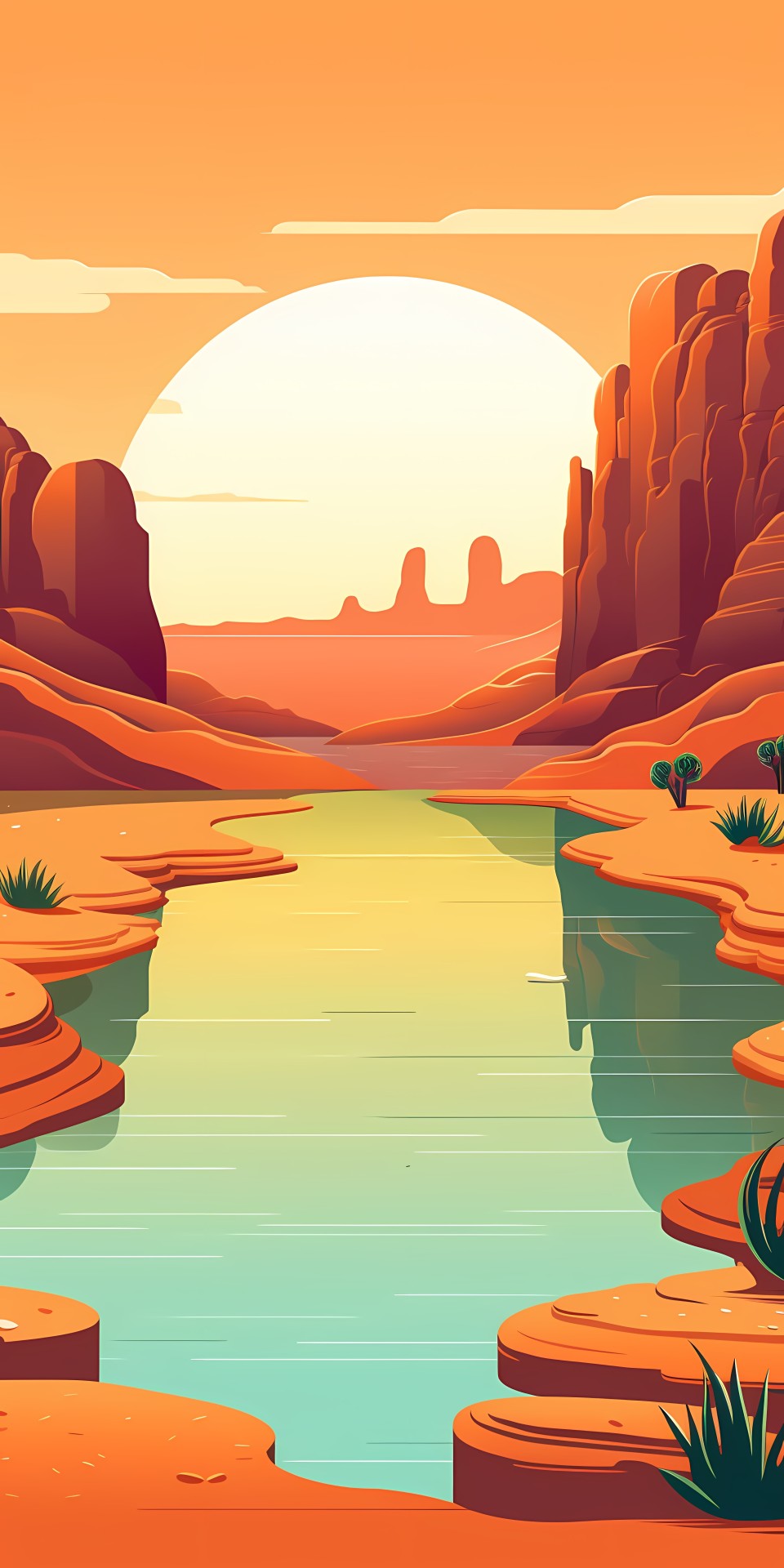
Wallpop Wallpaper of the Day: Desert Pond
#mobile wallpaper#phone wallpaper#wallpaper#android wallpaper#background#phone background#aesthetic wallpaper#hdwallpaper#lockscreen#vector#desert#landscape#mountains#river#hills#pond#vector art
26 notes
·
View notes
Text
More Wicked Headcannons (bookiscal canon)
- Elphaba isn’t a women but doesn’t have the language to identify her gender.
-the tribes of the Vinkus (Winkie country) have their own magic, as do the Quadlings. While Elphaba is out and about helping the resistance and animal refugees, she is also learning this magic with those whom are willing to share (some magic is closed to outsiders). She learns the different approaches and theories about magic, and it helps make her a more powerful witch.
-there was already a resistance against the Wizard when Elphaba becomes the face of it. While on the run, she is quickly intercepted by members of the resistance forces, brought to their leadership and everyone starts working collaboratively.
-Elphaba’s family tree is as such:
Oscar Diggs + Melena Thropp= Elphaba
Turtle Heart + Melena Thropp=Nessarose
Frexpar Thropp +Melena Thropp = Shell
A Quadling + Gilkeneese Munchkin=Melena Thropp
So Elphaba has kin ties to all parts of Oz- the north, east, south, and west!
-Shell grows up and becomes part of the resistance, he’s gay and has a great partner who is Vinkin. They live on the western boarder of Oz in an Animal town, and help Animals cross the impassable desert. Elphaba also passes on any orphaned Animals she has in to them if another Animal is not available to raise the orphan(s), so they run a pseudo Animal foster home. They also take in human children if there is a need.
-Elphaba loves politics, and when she is introduced to Fiyero’s father (the King of the Vinkus), they butt heads at first. However, Fiyero’s father eventually sees Elphaba as an equal, and as a strong ally. He also loves to get into political discussions with her, and playing chess with her.
-the Vinkus royal family are Animal sympathizers, but also recognized the Wizard’s plan for total control over Oz. They couldn’t afford a full out civil war, so they contributed heavily to the resistance in secret.
- the resistance in the Emerald City is majority made up of displaced women from Quadling territory, whom are forced to participate in sex work to survive. They end up using sex work as a cover for communicating, blackmailing the Wizard’s supporters, and for getting Animals safely out of the City. Elphaba, for a short time, was one of these sex workers, posing as both the sex worker, and as clientele to pass along information, share supplies and resources, and to extort Wizard supporters.
- Elphaba also poses as a maunt (a nun) to hide from the Wizard’s Gale Force, and to pass along resistance information and resources.
-Fiyero will and does sit on Elphaba’s lap
- once they are forced to leave Oz, Elphaba and Fiyero don’t truely leave Oz, they go live with Shell snd his partner, taking care of the Animals and children. The Vinkus royal family know their location, so that they can send warnings ahead if needed.
- Elphaba, with the help of various other magical folk around Oz, change Fiyero back to human, but can’t reverse the damage done by the Gale Force. They nurse him back to a relativity non-dying state, but he was hurt really badly by the Gale Force. They are able to stabilize his spine enough with magic and physical therapy that he is mobile, though he deals with severe chronic pain. He refuses all pain medication, citing a need to be of clear head in case the worse should happen. He’s also afraid of getting addicted.
-Elphaba doesn’t like getting her hair cut…the longest it ever was, it was down to the backs of her knees.
World building Headcannons:
-the Vinkus has many different climates. In the colder, more norther climates, mammoths roam. There are no Mammoths, and no one knows why. In same region, Dogs work together in teams to transport materials, people, other Animals, etc to places on sleds. Each year they have a Dog only race from Ugabu to the Lesser Kells.
- in Quadling country, there were rubies in the rivers-causing the water to look reddish. Now there are so many Quadling bodies mass dumped in the rivers due to the Wizard’s genocide of them, that the river flows red due to the blood. The surviving Quadlings were those whom were mixed raced, forced to assimilate into other parts of Oz. The rubies were dipped into green dye, and were used to build the Emerald City.
- there are parts of Munchkinland where the people dress extremely modestly- including face and hair coverings. This is where Elphaba gets the idea/fashion inspiration to hide her face (and skin)
- guns are strictly limited in Oz, per the Wizard’s orders. He saw what the American second amendment argued for and didn’t want the public to have such power to form militias.
- Princess Ozma is still alive, but kept prisoner by the Wizard. She is kept in a guarded, but empty Quadling government building in Qhoyre. The building is overgrown with jungle foliage, and is made from clay and clam shells and rubies from the rivers; it’s a beautiful prison.
- pirates sail the Restwater and Kellswater Great Lakes
Hmmm that’s all for now!
#elphaba#fiyero#wicked book#fiyeraba#wicked musical#broadway#wicked#fanfic#wicked movie#headcanon#I swear I will write a fic someday#booksical#Headcannons#wicked headcannon
36 notes
·
View notes
Text
when kaveh bought mehrak's core from the desert (and spent all his money)
did he always intend on building a companion who could understand him? or did he just think the core was too cool to pass up?
basically, was mehrak always intentional or happenstance?

he's just like "Well i can't NOT buy this super cool thing"
and several months later he has a companion, toolbox, assistive technology, mobile storage, projector, mobility aid, perennial project that is mehrak

kaveh gave her animated expressions and the ability to communicate through beep-boops! he was absolutely anthropomorphising her from the get go
(and then he gave her the ability & authorisation to recognise and obey alhaitham's commands!)
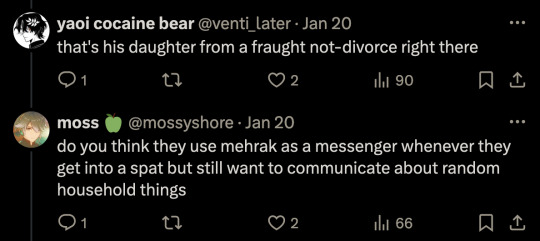
"mehrak tell your creator that if he wants me to buy more milk, a note will suffice, not leaving the empty carafe on the counter"
"mehrak tell alhaitham that i dont need him to buy milk, i was going to recycle the jug later & got distracted! i wasnt expecting him to be home yet"
"mehrak tell your creator the jersey milk is on the bottom shelf"
"mehrak-- ok this is really good milk actually. wow. anyways mehrak tell alhaitham that he still needs to apologise but i'm making khoresht fesenjan tonight"
reposted with permission, thanks moss & river!
43 notes
·
View notes
Text
So I know there are over 430 sites in the National Parks System but only 63 official National Parks. The rest have designations like National Monuments, National Historic Sites, and all that jazz. But sometimes you hear about one of these lesser parks jumping up the ranks to become a National Park.
Now, I know a lot of bureaucracy goes into determining the qualifications for these categories, but a little fantasy makes life on this cold unfeeling space rock more bearable, so I like to imagine these promotions happen because the landscape just… got cooler.
Picture a young park ranger making his rounds at Chattahoochee National Forest, making sure there are no fires or anything, when he steps into a familiar clearing and freezes in place. He takes off his sunglasses and stares like Sam Neill in Jurassic Park. A 4-mile long, 5,000 foot deep canyon has opened up overnight. “Well, that’s gonna mess with the Ruby Falls trail,” he whispers.
That evening when he gets back to his cabin, he hops on his Park Ranger group chat, ready to share the good news. Turns out his friend Steve in Arizona got there first.
“New waterfall just dropped.”
“What?”
“Yeah, there’s a huge waterfall in the middle of the Sonoran Desert.”
“That should definitely promote it from lame National Monument status, right?”
“I don’t know, did you hear about the Ohio redwood?”
“Is that just what it sounds like?”
“Yeah, a 300 foot redwood tree grew in the backyard of the James A. Garfield National Historic Site and they didn’t upgrade that one.”
“Okay, but historic parks don’t really have that upward mobility, Steve. Like, it’s not gonna get more historic.”
“A giant redwood in Ohio is pretty historic! I heard it’s all politics. They already made Cuyahoga Valley a National Park and they’re not gonna do another Ohio one so soon.”
The ranger vaguely remembers another interesting story that had been rumbling around the group chat. “Becca, how are those crystals coming along?”
A few months before, his colleague Becca had been giving a tour at Blanchard Springs Caverns in Ozark National Forest when she stumbled upon a hither-to unseen chamber in the caverns filled with hundreds of iridescent flower-shaped crystals that gently sang in four-part harmony when water dripped onto them.
“Oh yeah, some higher-ups from NPS came by and took some notes, but they said keep an eye on the crystals and let them know if they multiply into the thousands or if we identify any incidents of missing body parts regrowing after rubbing one of the crystals.”
“That seems like overly harsh criteria.”
“That’s what I said. Apparently Carlsbad Caverns has one that can regrow kidneys. But only kidneys for some reason.”
“That’s weird. New River Gorge became a National Park and it’s way less cool than your crystals.”
“It’s my understanding there were some classified elements at play.”
The young ranger leans back and takes a deep pull from his Gatorade. He knows what “classified” means for the NPS. Those darn sasquatches.
23 notes
·
View notes
Text
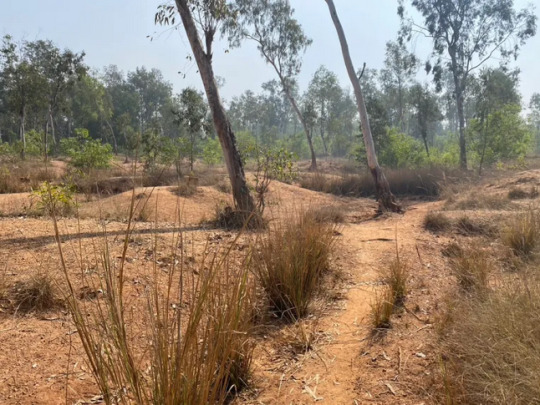
The “khoai” is the name colloquially given to [...] landmasses in and around the Chotanagpur Plateau in eastern India. Rich in iron oxide, these [...] soils are marked by a rugged and often undulating topography, resulting from millennia of erosion from monsoon rains, the many winding rivers that populate the region and action of winds from summer thunderstorms, popularly termed in Bengali as “Kalboishakhi.” The winds and the rains of the kalboishakhi dance across the lands adjoining the Bay of Bengal, often arriving at the horizon with ominous dark clouds right before sunset. [...]
The khoai is a charismatic frontier in an ongoing conversation within South Asian developmentalist imaginaries that call for optimal land use for the purposes of economic growth. [...] As the lateritic soil of the region is not suited for intensive agriculture, efforts have been made to make vast sections of the region arable [...]. And so, slowly, the red soils get taken over the green [...]. This is often done by breaking gullies and hoodoo-like structures [...] to flatten the lands [...]. The ongoing project to turn such “deserts” green has a long history. Yet alongside these projects, is the place that the khoai have in the literary, cultural, and spiritual imagination of many [...] that inhabit the Chotanagpur Plateau. The vastly open and hilly topography, dotted with sal forests [...] has often been the fodder for songs of longing [...]. The horizon of the sky meeting the red gullies of the badlands also form many a narrative that appear in local folk songs and stories. [...] They have also been sites of community-based agroforestry.
---
Recently, such badlands have been termed unproductive in and around my hometown of Santiniketan, India.
As South Asian developmental imaginaries wholly absorb the understanding of terra nullius from modern Euro-American conceptions of land, the idea that “badlands” are necessarily “wastelands” become cemented. Once beloved [...], the dark brown-red hoodoos and gullies today are seen as wasted potential that are depriving the public of much-needed resources, and the possibility of the coming of civilization in accordance with upper-caste aspirations. Khoai today have become sites for proposed plantations facilitated by local forestry authorities, holiday homes and cafes [...], luxury resorts [...].
The ethos of invoking terra nullius has travelled into discourses surrounding “practicality” and the absolute necessity for villagers and small town folks in the area to be saved by their urban-dwelling upper caste counterparts [...] who are interested in their cultural practices, seemingly idyllic agricultural lifeways and the simplicity away from the stresses of cities such as Kolkata. But in this framework, the imaginaries of development are necessarily embedded in compulsory extraction, whether that be of cultural economies, minerals, timber, or land for development. [...]
[B]adlands get turned into places that need saving from being “wasted” by the carelessness and unimaginative shortsightedness of villagers and Adivasis, who are simply seen as ill-equipped to deal with the progression of the global economy.
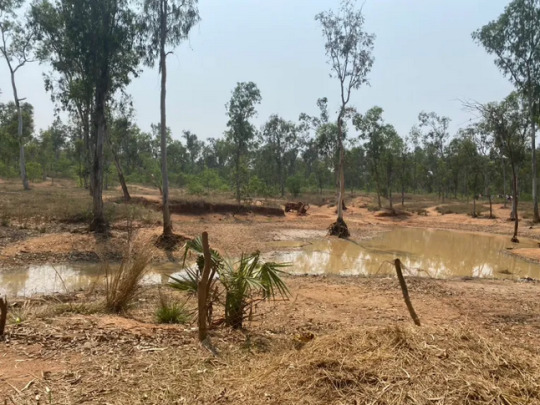
These days, it is hard to find a piece of the “khoai” that has not been subjected to projects of agriculture, forestry, or have been subjugated to [...] property ownership [...]. As the figures of the plantation and its attendant cultures of enclosure and theft of commons creep into places previously overlooked by the tentacles of global extractive forces, many, if not most khoai areas are mobilized to be “redeemed” into productive little plots legible to capital.
I have to wonder about the processes of consent and negotiation that have informed such projects. [...] These areas were in the past predominantly inhabited by Adivasis or Indigenous peoples of India, who had resisted the [...] hierarchies [...].
Badlands such as the “khoai” present a challenge to capitalist imaginaries because they defy its temporalities and its compulsion to make all aspects of being productive and legible to exchanges that foster logics of uninhibited growth. [...]
What, then, does it mean to care for wastelands? [...]
What histories are paved over by concrete? What does development mean in places where inequality is still rife, but there are shiny new roads? What does a future look like, where we can let badlands and “wastelands” just be, as part of ecological and cultural commons?
---
All text above by: Aadita Chaudhury. "Caring for Badlands". The Otter, Network in Canadian History and Environment (NiCHE). Emotional Ecologies series. Ed. Jessica M. DeWitt and Sarah E. York-Bertram. 14 July 2023. [Photography by Aadita Chaudhury, included in the original article. Bold emphasis and some paragraph breaks/contractions added by me. Presented here for commentary, teaching, criticism purposes.]
101 notes
·
View notes
Text
Fish of the Day
Today's fish of the day is the Freshwater Plesiosaur!
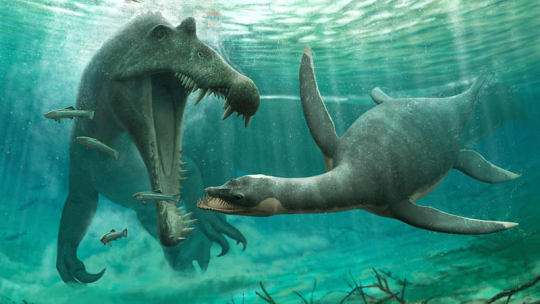
The freshwater plesiosaur was requested by Jasper, thank you Jasper! Plesiosaurus as a marine reptile, well known for their prowess as apex predators, but freshwater plesiosaurs are a relatively new idea. Based on the finding of a couple of fossils in what is now Morocco's Sahra desert river system, specifically an area called the Kem Kem beds. These fossils are scattered, showing us that this is not just the bones of one animal but a group of freshwater plesiosaurs that lived in the area, at least a dozen of them. The finding of many teeth in particular shows that these animals didn't just swim in from the ocean temporarily, but lived in the area long enough to shed teeth. This has led to some theories that the popular cryptid, The Loch Ness Monster, may be a freshwater plesiosaur, although no fossils have been yet found in that area. Although this does not confirm their existence it raises a strong argument for them. However, with limited knowledge about them for the time being, let's go over plesiosaurs in general!
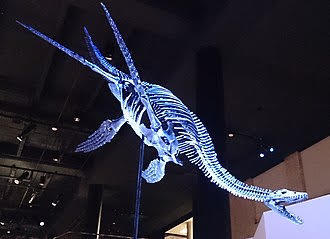
Found and named in the early 1800's the plesiosaur, from order Plesiosauria, is thought to have first appeared in the late Triassic Rhaetian stage, about 203 million years ago. These animals went extinct about 66 million years ago, to the Cretaceous-Paleocene extinction event. How they swam is still up for debate, many favor the theory that they had wide range with each of their fins, and had identical strokes, but other theories are that they may have used only the fore or hind fins for locomotion, or perhaps used them in reciprocal movement. Similar debate exists for how these animal may have dived, although we know they dived for food, as signs of decompression sickness have been found. As apex predators they ate through anything they could get close to, small fish, larger fish, sharks, cetaceans, crustaceans, one another. It is found that although they were certainly near the top of the food chain, some of them were still occasionally prey for large sharks, but mostly they fell to one another, larger plesiosauria hunting smaller. It is thought they evolved to fill the niche left open by the extinction of Ichthyosaurs, which died out in the late Cretaceous, and allowed for diversification to take place in Plesiosauria. Plesiosauria during this era evolved two distinct morphological types: the pliosauromorph build, the Pliosauroidea family, and the plesiosauromorph build, the Plesiosauroidea family.
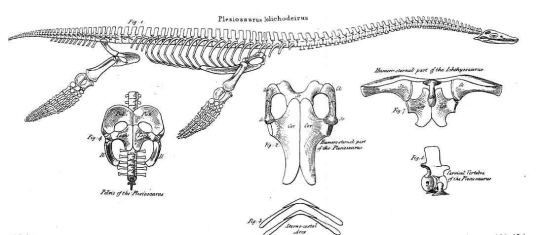
Pliosauroidea is defined by their large heads and short necks, often compared to the build that crocodiles have. They are also known for having larger hind flippers than other plesiosaurs and can be found mostly across South America, and along the equator, although some fossils have been found as far north as Norway. The largest genus found so far, the Liopleurodon, is as large as 6 feet 5 inches, or just a little under 2 meters.

Plesiosauroidea was defined by the long skinny neck, which was used to hunt in small holes, and could move fast to snap up small marine animals nearby them. Although Plesiosauroidae is often depicted as a fast moving predator, it is found that they were likely slow swimmers, pushing their way through the water similar to the swimming methods of turtles, staying close to the surface and using their four limbs for mobility, making it easy to snap at nearby animals. Despite the common displays of them in swan-like positions, with the head raising out of the water, this is unrealistic, as they could not raise their heads up to a degree like that, and the weight of the muscles would prevent them from surfacing. The size difference between differing species was huge, as some could be only as large as 3 meters to 20 meters in length. It is currently thought that the freshwater finds belong to Plesiosauridea.
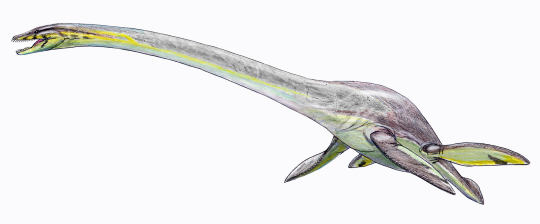
Everyone have a good day!
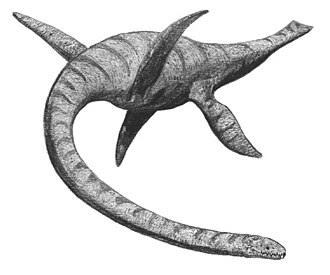
#fish#fishblr#fishes#fishposting#aquatic biology#aquatic#marine biology#ichthyology#marine animals#marine life#freshwater#freshwater fish#animal#animals#animal facts#fish of the day#information#education#nature#river#paleo#paleontology#plesiosaur#plesiosaurus#freshwater plesiosaur#Plesiosauria#Pliosauroidea#Plesiosauroidea
29 notes
·
View notes
Text
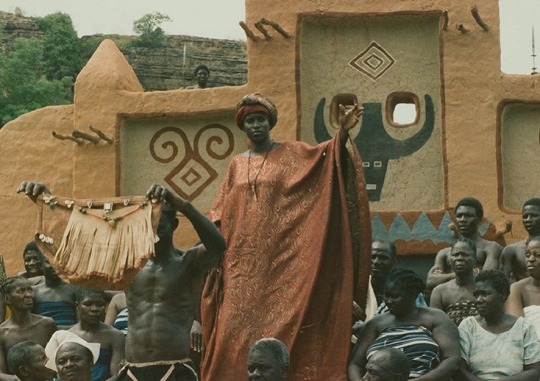
Sarraounia Mangou, the Nigerien African queen and sorceress
In the late 1800s, the French Voulet- Chanoine Mission or Central African-Chad Mission, led by the captains Paul Voulet and Julien Chanoine, were dispatched to Africa by the French government to conquer the territories between the Niger River and Lake Chad and unify all French territories in West Africa.
History says that after leaving French Sudan in January 1899, they became very callous and subjected the native people to all kinds of inhumane treatment.
They were just unstoppable until they met Sarraounia Mangou.
Sarraounia (a title indicating a female chief or a lineage of female rulers) was the Queen of the Azna, a subgroup of the Hausa, who ruled in the Niger Republic, during the late 19th century.
She was born with yellow eyes, like those of a panther and so the panther became the symbol of the Azna.
She became queen at the age of 20, after her father’s death.
Said to possess sorcerous powers, Sarraounia had, before the French invasion, fought wars on behalf of her people.
She first drove off the Tuareg, who often attempted to raid her village, then the Fulani, who wanted to convert the Azna to Islam.
Since she had often won peace with both tribes, she sought their help to fight a common enemy the French but they refused.
She subsequently mobilized her people and resources to confront the French forces of the Voulet–Chanoine Mission, which launched a fierce attack on her fortress capital of Lougou.
Known as the Battle of Lougou in 1899, the Voulet-Chanoine Mission met the strongest force and lost several men to the fighting.
What Sarraounia and her people also did was to raid the French on a nightly basis, appearing from what historians called the almost impenetrable bush where the Azna defended themselves when facing a superior enemy.
They disappeared quickly into the bush after the raid.
As many began talking about the magical prowess of the Queen, many of the army on the French side deserted the camp. Most of them were Africans who were forced into service.
The attacks eventually came to an end and within three months, the expedition commanders Voulet and Chanoine were assassinated by their own soldiers over their refusal to obey orders from France and other atrocities.
But many still attributed their deaths to the magical prowess of Sarraounia.
•••
Sarraounia Mangou, la reina y hechicera africana de Niger
A finales del siglo XIX, la Misión Francesa Voulet-Chanoine o Misión Centroafricana-Chad, dirigida por los capitanes Paul Voulet y Julien Chanoine, fue enviada a África por el gobierno francés para conquistar los territorios entre el río Níger y el lago Chad y así unificar todos los territorios franceses que estaban ubicados en África Occidental.
La historia dice que después de abandonar el Sudán francés en enero de 1899, se volvieron muy insensibles y sometieron a los nativos a todo tipo de tratos inhumanos.
Eran imparables hasta que conocieron a Sarraounia Mangou.
Sarraounia (un título que significa jefa o un linaje de mujeres gobernantes) fue la reina de Azna, un subgrupo de los hausa, que gobernó en la República de Níger a finales del siglo XIX.
Nació con ojos amarillos, como los de una pantera y así la pantera se convirtió en el símbolo de los Azna.
Se convirtió en reina a la edad de 20 años, tras la muerte de su padre.
Se decía que Sarraounia poseía poderes mágicos y, antes de la invasión francesa, había librado guerras en nombre de su pueblo.
Primero expulsó a los tuareg, quienes a menudo intentaban atacar su aldea, y luego a los fulani, quienes querían convertir a los Azna al Islam.
Debido a que a menudo había logrado la paz con ambas tribus, buscó su ayuda para luchar contra un enemigo común, los franceses, pero ellos se negaron.
Luego de esto, ella movilizó a su gente y recursos para enfrentarse a las fuerzas francesas de la Misión Voulet-Chanoine, que lanzó un feroz ataque contra su fortaleza principal, Lougou.
Conocida como la Batalla de Lougou en 1899, la Misión Voulet-Chanoine se enfrentó a la fuerza más poderosa y perdió varios hombres en los combates.
Lo que también hicieron Sarraounia y su pueblo fue atacar a los franceses todas las noches, se aparecían de un arbusto casi impenetrable, como le llamaron los historiadores. Los Azna se metían en estos para defenderse cuando se enfrentaban a un enemigo superior y desaparecían rápidamente entre los arbustos después de atacar.
Cuando muchos empezaron a hablar de las habilidades mágicas de la Reina, muchos miembros del ejército del lado francés abandonaron el campamento. La mayoría de ellos eran africanos que fueron obligados a servir.
Los ataques finalmente llegaron a su fin y luego de tres meses, los comandantes de la expedición Voulet y Chanoine fueron asesinados por sus propios soldados por negarse a obedecer órdenes de Francia y otras atrocidades.
Pero muchos todavía atribuían sus muertes a las habilidades mágicas de Sarraounia.
#africanhistory365#african queen#african warrior#africanhistory#africanheritage#knowledgeisfree#knowyourhistory#knowledgeispower#knowlegde#black history is everybody's history#historyfacts#black history is world history#niger#nigerien#queen#panthers#history#historia#historia africana#conocimiento#Níger#african history#african#the more you know#black history matters#black history month#blackhistoryeveryday#blackhistoryyear#blackhistory#blackhistory365
20 notes
·
View notes
Text
Monster Hunter Wilds Beta!
Having played the beta a little bit, and only with two weapons, Switch Axe and Bow, as to not fully spoil myself, and so far I think it's good.
They've focused heavily on QoL changes. Bow's phials being a built in gauge now, claw hook being able to just snatch pods from small monsters and instantly killing the. Plus how mobile everything is.
I don't know how I feel about the pop-up camp system. I really did like finding and setting up camps in their unique, hand-made areas. It does feel like for some of them they just plopped down a marker randomly. Which I guess is what they were going for as there are still hidden-away areas like the camp underground by the river and one up high in a cave.
I am ambivalent towards it so far. I really did like that in World it seemed like you were actually camping and traveling to a location. It feels like here with how you can go directly out from base camp into the world, it feels strange.
Floaty is how I would describe the entire game so far, like your not tethered to just one spot anymore.
Oh and the whole giving them actual names and their being no Monster Hunter Language is still not passing my vibes check. It was small, but it made Monster Hunter feel unique.
Plus so far, I'm not feeling the story. Monster Hunter isn't exactly known for it's story, but I am one of the few who enjoyed World's "taming the wilderness" and the mystery of the Elder Crossing story.
Personal gripe too, but the plains aren't doing it for me too, it's super well made but the entire place does feel desaturated. Wildspire Waste's was a desert, but even it felt alive in terms of colour.
11 notes
·
View notes
Text
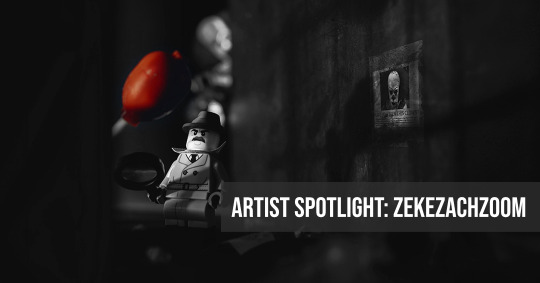
🤩 ARTIST SPOTLIGHT: zekezachzoom Hello everyone! It's time to direct the spotlight toward our community members, and today we will get to know better zekezachzoom!

"My name is Sunny but you might know me better as zekezachzoom on social media. I am a freelance graphic designer and have been a toy photographer for 10 years.
I came up with this profile name after my sons’. Zeke is my second son and Zach my first. I imagined them running away after calling their names, hence Zoom. I live in Singapore where we have two seasons, Rain and Shine. It’s a tiny island and getting around is pretty fast and easy. I have a few favourite spots around the island for toy photography. I will be more than happy to explore these places with any of my overseas friends if they pop by this part of the world! Though sometimes I wish we have mountains, rivers and maybe desert for more outdoor choices. On the plus side, being a small island makes organizing an outing with fellow toy photographers very easy, even if it is a last minute thing.
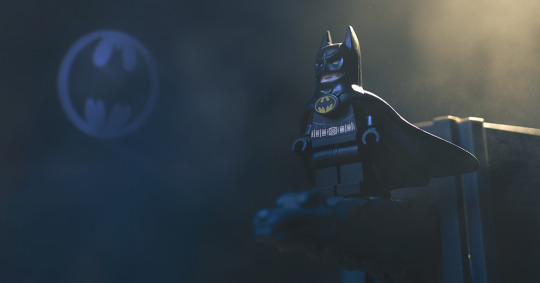
I started toy photography after posting an image of Spiderman squatting on the window ledge overlooking the neighborhood on Instagram…and then discovering the community. Everyone was and still is very encouraging and I think this helped in me trying to better myself with each photograph. Though Instagram is not what is used to be, but that is a discussion for another day.

Talking about process, if there is a brief for the photo (commissioned work, photo contest), I will usually follow up with some research work on the topic. At the same time, I will park the topic for the photo at the back on my mind and let it simmer unconsciously.
However, for personal work, I usually do not actively chase for ideas, forcing them out. I find that most ideas come to me randomly. This usually happens in a variety of ways, like watching videos on any subject, going about my daily life, observing and listening to things around me. I think being curious about everything and anything certainly helps in generating ideas.
Once I have a photo idea, I then let it sit and simmer further in my mind’s eye. This can help take the concept to more interesting directions in terms of story, setup, composition, lighting, etc. More ideas can be built upon this initial concept base on even more things you see and observe. It also allows time to think about how to setup the shot.
I will always sketch my ideas on my notebook, which is always by my side. At present time, I have more ideas than time to shoot!

When it comes to the shoot itself, I usually start with the mobile phone, quickly checking the angles and then locking my camera to a tripod. I always use a tripod to gather multiple shots of the same angle with different lighting, atmospheric effect so that I can then composite them in post if need be. Then I will shoot couple of shots for final composition without the lighting and atmospheric effect. I enjoy the post production work, especially the color grading part. Sometimes, the word PHOTOSHOP give rise to arguments within the photographic community. To me, it’s just a tool to bring the picture to its maximum potential.

I think people I know in the community know me for my punny, silly and light-hearted stuff. So much so that friends recommend me toys they think that might fit this style. However, recently I find myself going all over the place in terms of themes. I just enjoy the process of experimenting different approaches, be it the storytelling or the technical bits of photography. When I am shooting indoor, I usually set up for low key images. It gives me a chance to experiment with indoor lighting. If there is one thing I would tell my younger self when I started, it’s to pay attention to lighting. It can elevate a nice photo to a great photo. Also, I like to build simple sets with everyday object that end up looking like something else when viewed through the camera. I do this mostly because I am lazy and don’t have the patience to build dioramas. I am usually with a group of friends when I shoot outdoors, because we have a monthly gathering among us. During these outings, I am constantly looking out for areas with awesome lighting. I try to reserve my action shots (ie scenes with flying debris) outdoors, mostly because there is no need to clean up after the mess! Also, outdoor light is beautiful…but fast changing lighting condition is another story all together.

When I first started, it was all about the Star Wars figures. I had stopped collecting figures since the 1980s , but it was the Star Wars Black Series that got me collecting again with all its glorious articulation. Once I discovered the community, I realized that there were other characters to be bought! I sometimes wonder if that is a good thing, from my wallet’s point of view.
I find myself gravitating towards nostalgia when it comes to the figures I buy. So, my collection and images usually reflect that, with movie/TV characters from the 80s. Stuff like Aliens, Indiana Jones, Predator and Back to the Future, etc. However, whether they are LEGO minifigures, statues, 6 inch figures, I will shoot any figures as long as they serve the stories. Each type of figures has its own pros and cons and challenges. But I would not have it any other way.
This is my basic equipment list: • Nikon Zfc with kit lens (16mm to 50mm) • Lensbaby Sweet 35 lens • Helios 44-2 58mm lens • Extension tubes for close ups • 2 speed lights • Couple of LED cube lights • Manfrotto tripod
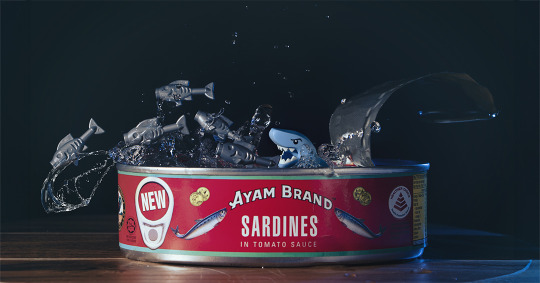
Why toy photography? I love pop culture and telling quirky weird stories with characters I love. I can never produce awesome looking illustration of these images I have in mind and photography seems like the next best thing. Hence toy photography! When I first started, I was always coming up with ideas in the middle of the night and sketching them down and made it my mission to spread this hobby. I recall vividly telling a friend how much I enjoy this hobby and was going to just keep throwing out toy photos into the internet and see what comes back. And a lot has indeed happen since then: • I started a local Facebook group to organize more toy photography outings and share photos. • Managed to get featured on national newspaper and television, because they came across my work online. • Made friends on social media and participated in podcast by some of these friends. • Conducted workshops. • Shot for some toy companies. • Collaboration with toy designers and model/diorama makers. • Nikon Ambassador.

I have enjoyed the journey so far and look forward to improving myself. Something I always remind myself: your best photo is the one you have not taken yet."
Thank you for accepting our invitation and let the community knows you better!
If you want some insights on the exclusive picture and for a better view of the others, head to our blog at https://brickentral.net/.
- @theaphol, Community Outreach Manager
#lego#lego photography#brickcentral#toy photography#afol#legophotography#toyphotography#minifigures#brickcentral member#brickcentral artist spotlight#lego art#artist spotlight#interview#artist profile
18 notes
·
View notes
Note
War. War never changes.
When atomic fire consumed the earth, those who survived did so in great, underground vaults. When they opened, their inhabitants set out across ruins of the old world to build new societies, establish new villages, forming tribes.
As decades passed, what had been the American southwest united beneath the flag of the New California Republic, dedicated to old-world values of democracy and the rule of law. As the Republic grew, so did its needs; Scouts spread east, seeking territory and wealth, in the dry and merciless expanse of the Mojave Desert. They returned with tales of a city untouched by the warheads that had scorched the rest of the world, and a great wall spanning the Colorado River. The NCR mobilized its army and sent it east to occupy the Hoover Dam, and restore it to working condition.
But across the Colorado, another society had arisen under a different flag. A vast army of slaves, forged from the conquest of 86 tribes: Caesar's Legion. Four years have passed since the Republic held the Dam - just barely - against the Legion's onslaught. The Legion did not retreat. Across the river, it gathers strength. Campfires burn, training drums beat.
Through it all, the New Vegas Strip has stayed open for business under the control of its mysterious overseer, Mr. House, and his army of rehabilitated tribals and police robots.
You are a Courier, hired by the Mojave Express, to deliver a package to the New Vegas Strip. What seemed like a simple delivery job has taken a turn... for the worse.

#this reminds me we need to get back to playing fnv#we’re at the boomer camp right now and we’re doing the yes man route#not a heritage post
60 notes
·
View notes
Note
So I just found out that Poseidon is also the god of droughts and what are your thoughts on a child of poseidon with drought powers, a complete opposite to their more sea based children?
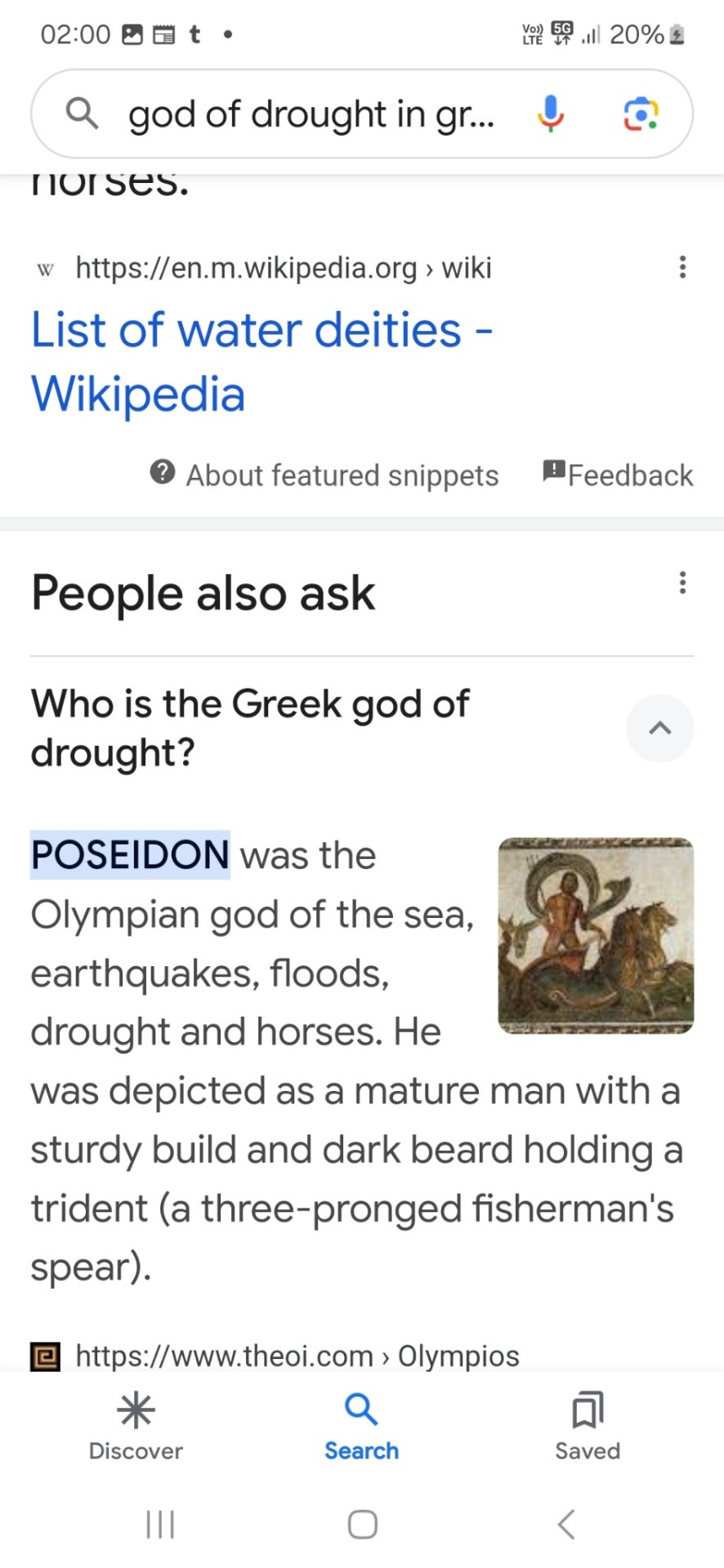
[ID: Screenshot of a google search. The search term reads, "god of drought in gr...". The search term is cut off due to the mobile layout of the screenshot. A featured snippet at the top comes from wikipedia, reading, "List of water of deities".
The core of the screenshot is the People Also Ask section, of which the return is "Who is the Greek god of drought?" This question has been dropped down to show a result from "www.theoi.com". The answer reads, "Poseidon was the Olympian god of the sea, earthquake, floods, drought and horses. He was depicted as a mature man with a sturdy build and a dark beard holding a trident (a three-pronged fisherman's spear)." /end ID]
Oh! I knew this 🙌 I think it's related to him being the god of the sea/water, sort of like how Apollo is associated with healing but also the plague. I always find it funny when that happens 🤣
So for the kids who skew more to the side of drought, obviously they still have their sea powers. They're probably far more dry in tone, less empathic, less emotional. Maybe they're more prone to the earthshaker side of Poseidon as well, and the equine, to make up for the lesser interest in the sea. Plus earthquakes and horses are more land-based and a drought affects the land (agricultural loss, wildfires, increased sandstorms, etc).
In PJO canon, I'd want to say drought-based kids grew up more inland where access to a large body of water was difficult to come across. So it's less about internal nature (as with my interpretation of the freshwater vs seastorm Neptune babies), and more about familiarity and adaptation - sort of like how catci and other desert plants have evolved to handle long periods without water.
Powers that they have an increased capability for over their sea counterparts:
causing earthquakes! they can manipulate them on a small or large scale, but they have higher propensity. it's a little harder for them to cause underwater earthquakes tho (which. can become tsunamis btw)
dehydration - sort of an inverse of drowning a person in their own fluids, they will the liquids inside them to dry up at a rapid pace
as a subset of that, i think it would be so cool if they could pull a tantalus-like punishment with enough focus on someone. no matter how much you drink, you will always be thirsty, you will never be satisfied, you will be captain barbosa and his crew, turning skeletal in the moonlight
they can withstand higher and drier heats than their sea-preferred counterparts (for example, percy would be hanging off of carter in the desert, crying for water, while they're chilling and vibing, truly a cactus of a person)
similarly, they retain water better, and sweat less. their bodies need less fluid to keep going on (this makes them better at giving blood lol, stay juicy everybody!)
while most children of poseidon are capable of piling water in the air into something usable, the drought prone kids have picked up how to pull water/usable liquid from anything available, as dry climates may lack enough water in the air for it to be worthwhile compared to humid climates --- so they're more likely to pull water out of living things, pull water out of the ground, or even find water deep underground (well water!)
due to the above, they're more capable of causing inland floods, they can pull water out from deep in the earth and force it to surround areas that are devoid of rivers, lakes, or even high rainfalls - this isn't just because of the whole "god of floods" thing either, it's because after a long period of drought, sudden rains can cause flash flooding to occur, so they're good at making flood happens
heat generation! they may be able to make things hotter, and/or drier
they have perpetual black thumbs. they are... not very good at growing plants lol
finding/summoning horses. it might take a while, but if there is a horse, they will find it (like the horse version of a dowsing rod, which, lol, they're kind of the human version of a dowsing rod, i guess), and if there are no horses nearby, they will get one to come to them through ✨ vibes ✨
their version of a storm is a heatwave OR extreme rain. yes, they can summon hurricanes or typhoons, but those are much more ocean-based things. so forcing high and burning levels of heat that makes everyone stumble and sag, sweating through every inch of fabric they have OR extreme and heavy rainfall that practically drowns you where you stand and knocks you to the ground is more their instinct
lowkey i wanna give them sandstorms as well, since that can be an effective of long-period of drought, but. you know. idk how much greece was ever getting pummeled by sandstorms for that to be something they associated with drought. (egypt, on the other hand, set, my dangerous and beloved)
(funnily enough set is also the god of foreigners, so like, who knows, maybe he and poseidon struck a funny deal when one of his kids traipsed over there while wandering around)
Since I think the difference between sea-based Poseidon babies and land-based Poseidon babies is just due to their adaptation of their environment, I think someone who is sea-based could easily become more land-based after living in such conditions for a while, and vice versa. Sort of like accents, lol. You know, if Percy decided to up and move to the desert in his 40s, he'd adapt after an initial period of "oh my gods oh my gods where is the fucking water where is the ocean i am dying" lol. it would take him a lot longer to pick up on the accent of the land than if he were younger, and so he'd still maintain his "sea" accent long-term
Because of this, I think it would be really neat if, way back when, it was common for the kids to take a few months away from camp to go living in the desert for a bit so they could pick up some land skills - like a rite of passage for poseidon demigods. one of the older cabin members goes out with them to make sure they don't die, helps them hone into the skills they might not have tapped into before, etc and so on. The kids come back at the end of their outing, more well-rounded and capable of tapping into the opposite side of their powers, when and if needed. Some of the kids might repeat the outing more than once for funsies, but most of them usually just do the one time thing, and then practice their land-based powers on a smaller scale at camp.
If a land-based kid comes into camp when they're much older, they don't typically have to do the outing, but sometimes they'll go out, not to learn anything, but to help the others, since they'll essentially receive assistance with their sea-based powers while they're at camp (presuming every version of camp has been based near the ocean or some giant water mass throughout the years - if not, then it goes the other way around, where they take a few months to go chill out on a beach for a few months).
Thanks for asking! If anyone else has any extra ideas, feel free to add them on! :)
Additionally, just 'cause, here are the four types of droughts I came across while googling "drought causes" because, lol, I'm an island boy, I am not familiar with droughts and wanted to get some facts in that weren't high temps and low rainfall (source):
Meteorological: region-specific; occur when an area receives less rainfall than normal; often measured by comparing the current situation to previous years’ rainfall. Some locations are affected more harshly than others.
Agricultural: when there is not enough moisture in the soil to sustain the growth of crops. Crops need different amounts of water based on their level of maturity, so they can be susceptible to droughts at different times. For example, most plants require moist topsoil to germinate, but this could be less important down the line as the plant matures. So, the effects of an agricultural drought hinge largely on the growth stage of the plants.
Hydrological: when there is a lack of surface and subsurface water supply; detrimental effects can be most readily observed in watersheds and river basins; affect the entire water cycle, take longer to notice, and have effects less immediately obvious than with other droughts.
Socioeconomic: when the water supply is too low to support human and environmental needs; wreaks havoc on the supply and demand of crucial commodities like water, grains, fish, and hydroelectric power.
#happy's asks#chiefkideclipselamp#happy talks pjo#percy jackson#percy watching one of his new sibling running around the desert with carter like it's not driest place in the world#they are vibing he is dying chugging all the water and wondering why he agreed to come out here (oh right his massive crush on carter)
17 notes
·
View notes
Text


Jade's Dragon Age/Mass Effect Sideblog
hello! I'm Jade. My main blog (where follows/likes are from) is @songofsaraneth but all my bioware themed thoughts, art, writing, and reblogs live here. My AO3 is Jadestone (JadeLavellan pseud for Dragon Age, JadeShepard pseud for Mass Effect). I post my own thoughts and chatter a lot in tags, feel free to reply/chat back! I love to interact, doesn't matter if we're mutuals or if you're following me or not.
This post is just an abridged version of the material on my blog's static pages, for those using the app rather than a desktop browser/mobile. If you aren't, you can get to the full pages at the below links:
about | my stuff | my writing | tags list | my characters
Otherwise, click the readmore below for all that

About
I'm Jade! by day I work in desert ecology, primarily botany and soil science, and have an interest in all things earth science related (especially when applied to fantasy/sci fi universes--every now and then you'll find me crying about the river and plant situations in Thedas). When not doing science, I also have a side career as a professional mermaid and freelance fine art model, and otherwise enjoy dressing up in costumes as various mythical creatures or characters. On this blog, I post and reblog a magpie mix of art, writing, lore, meta-analysis, jokes, and whatever else. I also spend a lot of time weeping over how long embroidery takes 😭 There's quite a bit of Solas, Fenris, Zevran, Garrus, and Lucanis in terms of characters/ships I'm most invested in.

My Stuff
Things I personally make or post. I have tags for:
My embroidery (finished pieces)
My writing tag (for WIPs, snippets, & thoughts--see masterpost for links to finished works)
My art
All of the above + screenshots, etc in one place
My general tag for original posts/replies is "ramblings"

Embroidery
Patterns & tutorials for my Dragon Age designs are available!
Ko-fi as ThreadWolf
Etsy as ThreadWolfTakeYou
I take commissions on a very limited basis, see full info post here

Writing Masterpost

Tag List Masterpost

My Characters
I have multiple playthroughs of each game but these are my 'canon' runs and the ones I write/chat about the most! Again there's more writeup on my characters page (not visible on the app, only mobile/browser) but you can still view their tags here.
Warden: Jade Surana
Hawke: Hawke
Inquisitor: Jacinth Lavellan
Rook: Juniper Aldwir
Shepard: Jade Shepard

Commissioned/gifted art showoff zone now because why not!



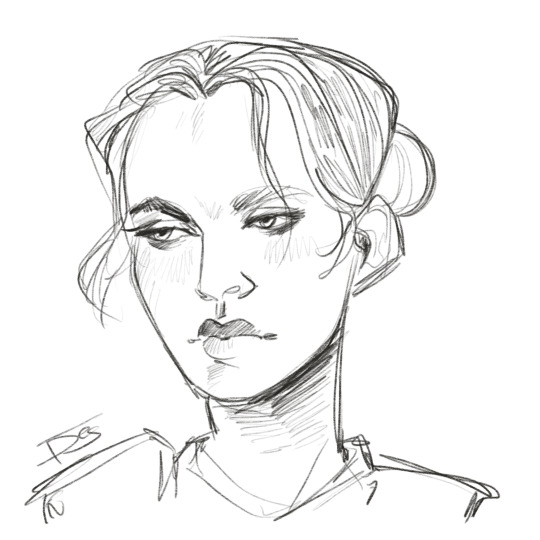


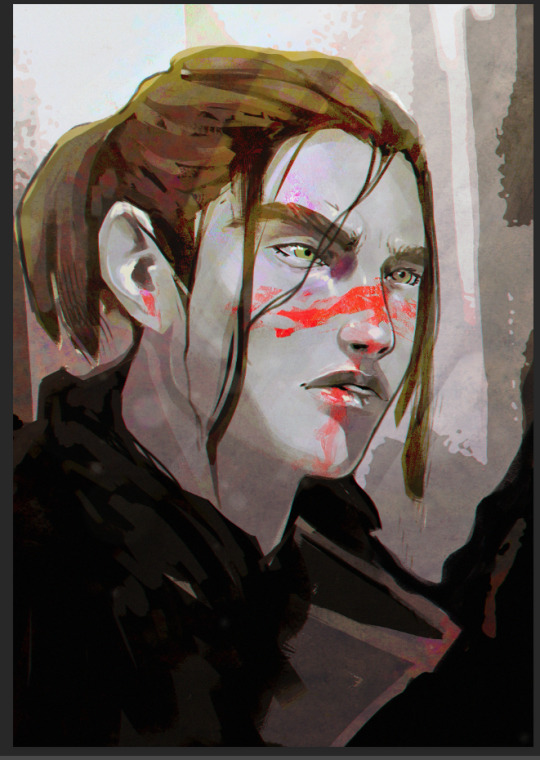



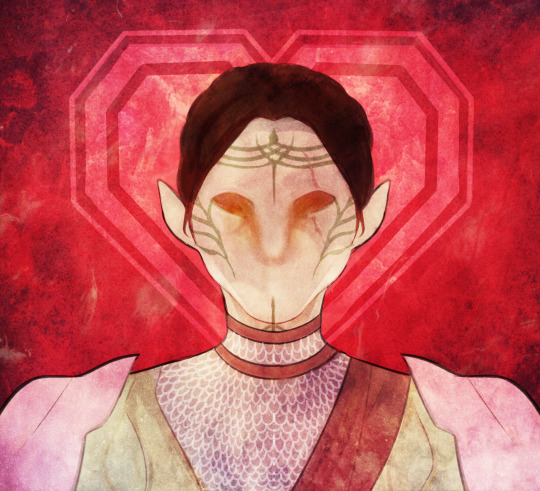
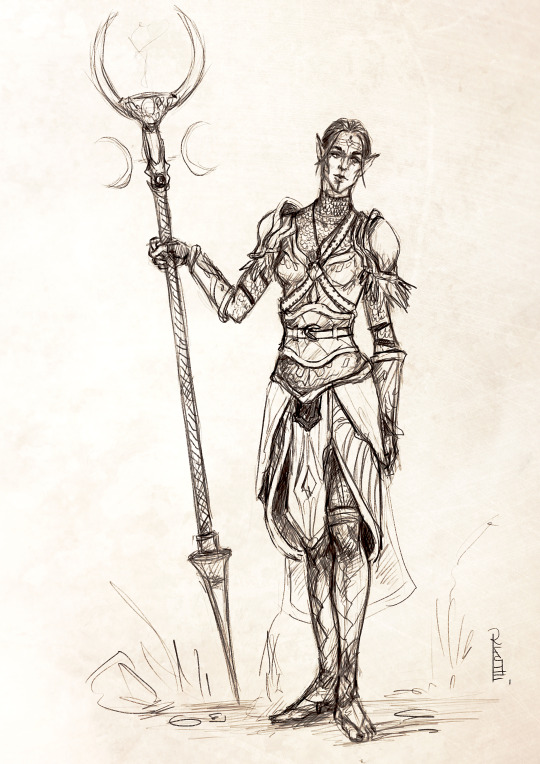


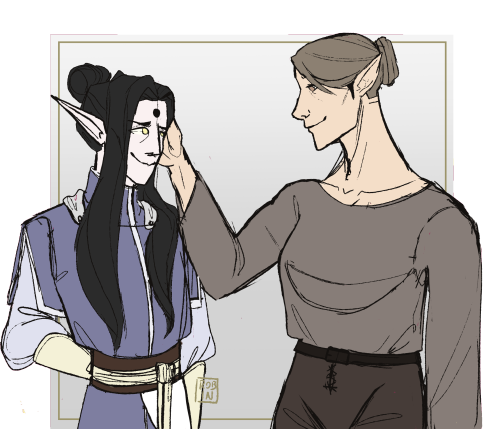

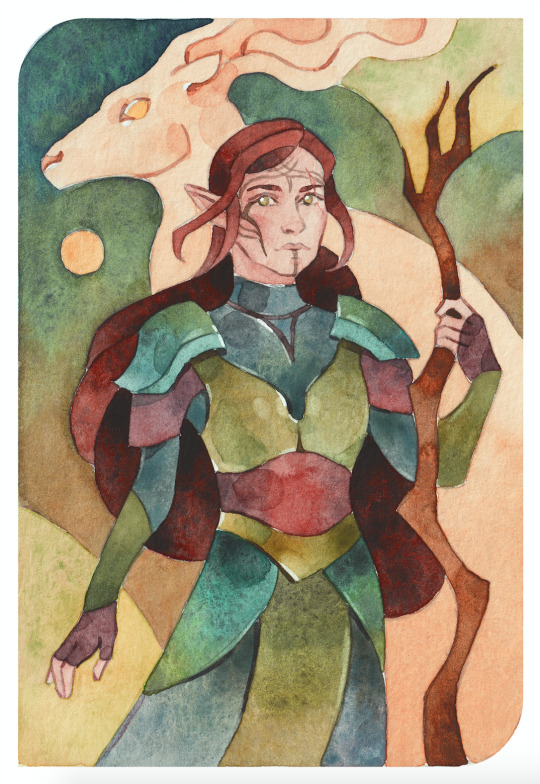
A lot of these artists have deleted their tumblrs or changed their urls over the years, and I have no idea where else to find them, but the ones who remain i still know of are: @le-mooon @raposabranca (bsky) @ayi-san @tropicoola @ruxandralache @ fleshworks @point-maitimo

#pinned post#blog housekeeping#ramblings#pinned posts#this has taken WAY TOO LONG oh well who am i if i'm not putting unnecessary effort into minor and useless things#watch me have forgotten something critical and have to come back to it tomorrow anyway
2 notes
·
View notes
Text
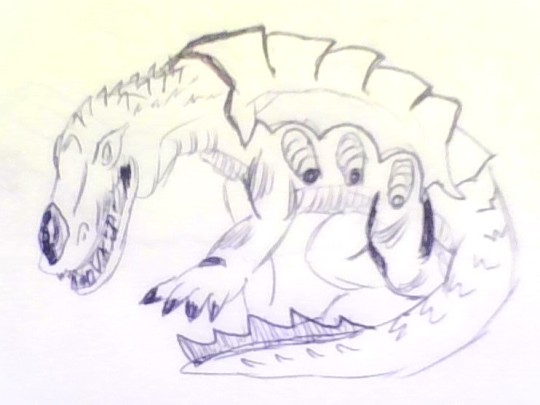
Another old sketch, one of the first MonHun muses I had; a fanged wyvern combining traits of gharials and gorgonopsids. - TORRENIAL Title - Gharial wyvern Monster class - Fanged wyvern Known locales - Coastal regions, marshlands and oases Element/ailment - Water Elemental weakness - Ice (3), Thunder (2), Dragon (1), Fire (0), Water (0) Ailment weakness - Poison (2), Stun (2), Blast (1), Paralysis (1), Sleep (1) Torrenial is a fanged wyvern predominantly native to coastal regions and marshlands, with some populations eking out a living by desert oases and rivers. Distinguished by its long snout and pale-brown colours, Torrenial is a formidable apex predator whose defensive integrity of its scutes complements its powerful jaws. Six flexible ports along its sides discharge water at high pressure from internal sacs, enabling both bursts of mobility and surprisingly effective projectile attacks. Torrenial is an ambush predator that specialises in lurking in shallow bodies of water, usually in the lagoons or rivers in coastal regions. It patiently waits for prey to come to the water's edge before lunging, combining its own sheer strength with bursts of speed to seize the victim and drag it underwater. It occasionally ventures into deeper water to catch fish if need be. Excelling in catching prey and rivals by surprise, Torrenial is liable to attack most anything that passes by the water, but it is comparatively passive if traversing on land. While humans are not usually worth the predator's interest, field workers are nevertheless advised to stay away from Torrenial and not to go near shallow bodies of water without first checking the fanged wyvern isn't present. Its ability to discharge water from its ports makes Torrenial formidable. It can change directions, reverse or strike from a distance with controlled bursts of water. Combined with its strength and jaws, this allows Torrenial to easily overpower most other monsters, especially if in its element. Torrenial exhibit sexual dimorphism; adult males have a large sturdy knob on their snout called a ghara. Males use the ghara to display to females and intimidate rival males, resonating sound through it to signal their vitality. Males are highly competitive, contending for territories that ideally overlap with three to four females; usually they use their ghara to settle disputes, but occasionally they will resort to wrestling; these brawls rarely result in injury. The females in a male's territory congregate to lay eggs at the centre of his turf, which the male diligently guards until the infants hatch and disperse to shadow their mothers. Their father will tolerate them but no longer makes an effort to protect them. The mother's care will only last for a year or so until the juveniles are old enough to find their own way in the world. As an apex predator comparable to monsters like Rathalos, Torrenial should only be challenged by experienced hunters (Low Rank - 5, High/Master Rank - 4). Hunters must be wary of facing the fanged wyvern in its natural environment; Torrenial may be lurking in any body of water, waiting to strike. Sonic bombs can surprise and expose it, and keeping the fight on land is crucial for forcing the fanged wyvern to empty its aqua sacs, reducing its effectiveness. Fully grown Torrenial knows few threats beyond elder dragons. Coastal individuals occasionally contend with competition from the likes of Plesioth or Lagiacrus, but hunting further inland alleviates this issue. Individuals in the desert can run afoul of the likes of Monoblos, but taking to the water allows them to avoid a needless fight. Juveniles, of course, can become prey for carnivores like Hyborlex, but a vigilant adult can see off most threats. - Thanks for reading and take care
9 notes
·
View notes
Text
#1983 - Triplectides sp - Stick Caddisfly

The last NZ species I’ll be covering until the end of the year when I go over there myself and find more.
photo by @purrdence
Apart from 3 Baltic Amber fossils, the genus is found in Asia from India to Japan; in Indonesia, Papua-New Guinea, all of Australia; on South Pacific Islands including New Hebrides, New Caledonia, and obviously New Zealand; and in South and Central America. Aoteoroa has 5 species, but I don’t know which this one is.
The many species of Triplectides breed in most kinds of watercourse, including cold and warm, unpolluted to moderately polluted, permanent and temporary lakes, ponds, rivers and creeks. The genus is ubiquitous in Australian waterways, including temporary habitats in the central deserts, and is often the most common caddisfly genus encountered in benthic surveys.
The larvae construct mobile cases usually out of plant matter, but occasionally stones or the cases of other caddisflies. The plant cases can be a hollowed length of stick, or a tubular collection of plant fragments. Their hind legs have dark bands between the leg joints.
These Caddis are shredders, chewing up plant matter.
#trichoptera#caddisfly#caddis#triplectides#new zealand insect#leptoceridae#longhorned caddisfly#aquatic insect
11 notes
·
View notes
Text
Here's How it's Done - Five of the Best-Made Tutorial Levels
What’s the most boring part of any video game, the part most players tend to skip? That’s right, the tutorial level. They’re always full of boring text box pop-ups, spelling out all the different buttons and controls and slowing the game’s opening down to a crawl - it’s almost like the game is teaching the player how to read more than how to play! At least, that’s the case with most games. Sometimes, developers try spicing it up a little, adding a bit of excitement and interest to the first level. It can come in the form of an engaging narrative intro, cool action, interesting locations and scenery, less linear pacing, and so on. There are plenty of tricks to keep that first level interesting; you could consider these games as a tutorial on how to do good tutorials! I’ve collected a handful of games that really hit the ground running with interesting and enjoyable openings - have a look for yourself! Press [Keep reading] to continue.
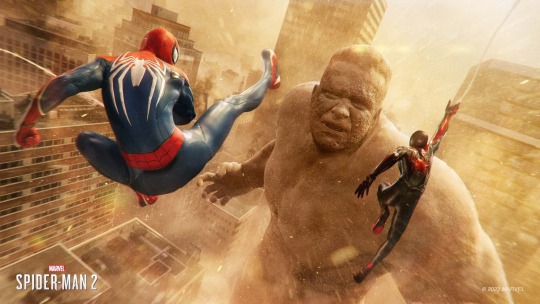
Marvel’s Spider-Man 2 How many games teach you how to play by immediately throwing you into a gargantuan, multi-phase boss battle? Spider-Man 2 does, and it’s equal parts tutorial and showcase of how powerful the PS5 can really be. Swinging into action, the Spider-Men cross the river besides Manhattan into Brooklyn to battle the latest villain of the week: the swirling, skyscraper-sized walking desert known as Sandman. The massive boss fight puts the opening action of the previous games to shame, as well as cleverly working in the tutorial amongst the story of the fight. Seamlessly switching between playing as Peter Parker and Miles Morales, the game runs through the basics of combat and mobility - swing into the fight, battle sandy clones summoned by Sandman, dodge the sandy giants’ attacks, and so on. A particularly impressive moment is when Sandman grabs Miles and flings him across almost the entire horizontal length of the map, only for Miles to slingshot himself right back - all within five seconds, no loading or slow environment generation to be seen! Peter and Miles make use of plenty of new, untested gadgets throughout the fight, such as the new Web Wings to glide on the wind and Peter’s mechanical spider-limbs popping out of his suit, learning how to use them alongside the player in an epic cinematic battle between the two Spider-Men and the largest enemy seen in the series yet!

Uncharted 2: Among Thieves The Uncharted series is known for its’ engaging narratives, but Among Thieves is a particular standout for being a great early example of how cinematic games can really get by throwing the player straight into the action. After the player presses “Start”, Nathan Drake wakes up with a bullet hole in his gut, sitting sideways in a busted-up train car dangling over a sheer cliff. In a desperate climb to safety as the train falls to pieces around Nate, the player will quickly learn the basics of parkour and movement that you’ll be using for the entire game - or plummet to their death in the beautiful albeit deadly scenery. After a quick flashback that hints at how this adventure started out, it’s back to surviving in the frozen, flaming wreckage Nate has somehow ended up in. Finally, Nate uncovers a mysterious artefact in the wreckage, presumably the source of all this fuss for the entire adventure - and it’s time for another flashback, all the way to the beginning for the story to really get started. It’s an expert combination of cinematic storytelling and intrigue (just how did Nate get into this mess?) with intense action and control tutorials that flow naturally alongside the plot - all the way back in 2009!
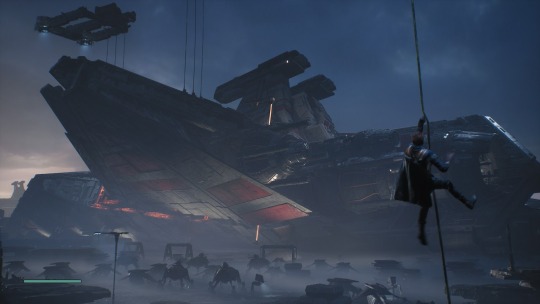
Jedi: Fallen Order Leaping and climbing across a dangerous scrapyard full of old derelict Republic cruisers, while the Empire’s spy droids and TIE Fighters constantly drone overhead - just another day on the job for Cal Kestis. As the game opens with breathtaking vistas of a vast, grim, rainy planet littered with familiar giant ships, Cal hides his Jedi training as he picks his way across the treacherous worksite. All the jumping, climbing and parkour you’ll be doing is taught very early on - the Empire sure doesn’t seem to care about workplace safety, but Cal (and the player) easily clambers across the machinery like it was a giant playground. Of course, the inevitable workplace hazard occurs as the ship Cal and his buddy Prauf are standing on falls apart, sending them sliding to their likely doom until Cal reaches out his hand and you get the coolest tutorial prompt in any video game: [RB] Use the Force. His Jedi powers revealed, the Empire quickly catches on and suddenly, Cal is fighting through a speeding train armed with a humming lightsaber and the power of the Force, effortlessly slicing through countless Stormtroopers in his path. After that taste of how strong Cal is against the cannon fodder, the player is pitted against a dreaded Inquisitor in a literally unwinnable fight before a mysterious new ship comes to your rescue - and the journey begins.

DOOM (2016) As a soft reboot of the longstanding DOOM franchise, DOOM (2016)’s opening instantly tells you exactly who the Doom Slayer is. Waking up buck-naked and chained to a bloody tomb in a laboratory, surrounded by shambling demons, what does Doomguy do? Snap the chains on his wrists, grab the nearest unfortunate demon by the face and smash it to pieces, leap to his feet, snatch up a stray pistol and aim it right at the next demon - and now the player is in control. Once you’ve cleared the lab, it’s time to grab your armour and get to work doing what Doomguy does best. Quickly, you’re shown just enough exposition to know who the important characters are and why things might be all demonic right now, but not so much that it slows down your path of annihilation. Doomguy even throws away a monitor trying to give lore, as if to say “I’m not here to listen to dialogue, I’m here to blast demons!” Through bloodstained halls and surrounded by hellish shrieking, the player sets off clearing out the first building of demons, given only the most absolutely necessary control tutorials. Finally, as the thumping main theme builds in your ears, Doomguy gives his trusty shotgun a pump as he steps onto the surface of Mars, ready to rip and tear.
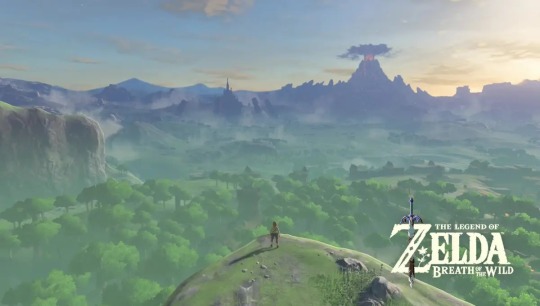
The Legend of Zelda: Breath of the Wild All these openings are fairly straightforward, but how about something a little less linear? In Breath of the Wild, the tutorial “level” is a wide-open sandbox by itself, allowing the player to explore the Great Plateau they find themselves waking up on at their own pace, in more or less whatever order they like. After you’ve left the cave you awaken in with your few belongings, the first thing you see is an old man walking away in the distance; the game’s way of telling the player exactly where to go and who to speak to, all without a single “go here” arrow. The tutorial’s open nature gives a sense of just how much freedom the player will have in the rest of the game - you can do whatever missions you like in whatever order you choose, or just wander around and enjoy the scenery at your leisure. Across the plateau, you’ll notice various shrines around you, each one granting a new power that you’ll use for the entire game, and none of them require any other shrines to be completed first. You’ll quickly learn the basics as you pick your way across the plateau - climbing trees and hills to gather resources, fighting off the handful of foes in your way, and so on with very little direct hand-holding from the game. It’s a great example of how easy it is to learn by messing around and doing things yourself, rather than reading constant button prompts and objective markers.
There’s a thousand different ways to teach a player how to play - and of course, some ways are much more intuitive and entertaining than others. Now that you’ve learned a few different kinds of good video game tutorials, you’ll probably never look at a games’ first level the same way again. Are there any other games you’ve played that did a great job showing you the ropes? Let me know! Feedback, reblogs and likes are much appreciated! Thanks for reading!
An Aussie Button-Masher
#gaming#article#spider-man 2#spider-man#insomniac games#uncharted#uncharted 2#among thieves#nathan drake#naughty dog#jedi fallen order#jfo#star wars#cal kestis#respawn entertainment#doom 2016#doom#doomguy#doom slayer#id software#the legend of zelda#breath of the wild#tloz#botw#zelda#link#nintendo
3 notes
·
View notes
Text
Feb. 5 (UPI) -- Heavy rain pounded Southern California, reaching double-digit inch levels in some places, as an atmospheric river storm saturated the region on Monday.
Ahead of the storm, California Gov. Gavin Newsom issued a state of emergency Sunday for eight counties forecasters predicted would take the brunt of the system -- Los Angeles, Orange, Riverside, San Bernardino, San Diego, San Luis Obispo, Santa Barbara and Ventura.
"This is a serious storm with dangerous and potentially life-threatening impacts," Newsom said, urging residents to heed emergency orders and alerts from local officials.
The state mobilized what Newsom said was a "record" 8,500 state-coordinated emergency response assets to respond to landslides, flooding, travel issues and emergency calls.
Officials ordered the evacuations for part of the Topanga Canyon after nine inches of rain fell there. Evacuations were also ordered for portions of Los Angeles County, which is expected to remain in place until Tuesday.
A mudslide damaged two homes in Studio City, next to Hollywood. Classes at the Vinedale College Preparatory Academy were canceled because of an evacuation order.
"The threat for flash flooding centers on Southern California Monday as a deep upper-level trough/Pacific storm system and associated atmospheric river slow pivots along the West Coast and pushes further inland," the National Weather Service said in a statement.
"Ongoing showers and thunderstorms will continue to produce very heavy rainfall fueled by the influx of anomalously high moisture, favorable upslope flow, and increasing instability."
The NWS said rainfall could reach up to 14 inches in some locations in the Los Angeles Basin region. It said the rainfall will likely create life-threatening conditions and flash flooding in urban areas, forcing small streams to spill over and cause debris flow and mudslides.
The weather service said not even the Mojave Desert will be spared from rainfall.
"A slight risk remains in effect for lingering locally heavy rainfall northwestward towards central California coast and also into portions of the Mojave Desert," the NWS said. "In addition, some strong, gusty winds will remain possible, though wind speeds/gusts should be trending downward overall."
3 notes
·
View notes